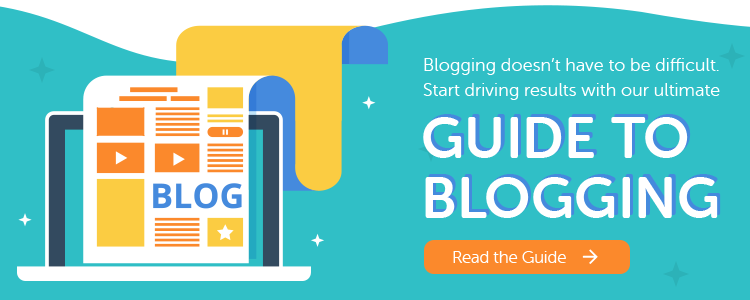Are you writing readable content?
It may seem like a silly question, but readability needs to factor into everything you write, from the shortest social media tweet to the most comprehensive whitepaper. If your audience doesn’t understand what you’re saying, you’re going to lose them to someone who says it better.
Most experts and marketers agree that when writing for the general public, text should be written at an eighth-grade level to capture the largest audience. While some topics or industries naturally lend themselves to more complex language, this is a pretty good rule of thumb.
If you’re concerned that highly skilled readers may take offense at something that’s written toward lower reading levels, it’s probably safe to assume that most people searching for content online simply want information delivered quickly, concisely, and in plain English (save the buzzwords for the boardroom).
Remember, attention spans are short, especially online, so easily understood language in an easily digestible format is often your best bet.
In addition, many people simply won’t notice that you increased readability by decreasing the reading level. It could be the difference between “Call your doctor right away if you have trouble breathing” and “Contact a physician immediately if you experience difficulty breathing.”
How Can I Improve the Readability of My Content?
There are a number of online tools available that can help you gauge the readability level you’re writing at. These tools use mathematical calculations to produce a score, analyzing a variety of factors depending on the tool you choose, including:
- Number of unique words
- Average length of words
- Words per sentence
- Syllables per word
- Percentage of hard words
The readability score is often given as a “grade level,” however there is no direct relation between an individual’s level of education and their ability to read text at a particular grade level. Readability scores are best used to assess whether your text is written at an appropriate level for your intended audience.
The Flesch Reading Ease and Flesch-Kincaid Formulas
The Flesch Reading Ease formula was created in 1948 by Rudolph Flesch, a consultant with the Associated Press who was tasked with improving the readability of newspapers (it was later used to help teachers determine the readability of their study materials).
While Flesch Reading Ease is probably the most commonly cited of all readability scoring formulas, it may not be the most intuitive. It generates a score between one and 100, which then requires a conversion table to understand the grade level of each score. For example, a score of 100 is a fifth-grade level and a score of 20 is college level.
In 1975, when trying to determine the readability of its often high-tech training manuals, the U.S. Navy decided things needed to be simplified. They enlisted the help of scientist and educator J. Peter Kincaid, tasking him with creating a revised system that would do away with the conversion necessity.
The result? The Flesch-Kincaid formula, which is now the standard of the United States Military and a friend of copywriters everywhere, myself included.
All the Formulas – All in One Place
Did you think writers, educators, and researchers would be satisfied with just two similar formulas? Of course not! The following formulas also exist:
- Gunning Fog
- The Coleman-Liau Index
- The SMOG Index
- Automated Readability Index
- Linsear Write Formula
I won’t go into what each of them entails, but I will share with you a free site you can use to get your content analyzed by all of them (and learn more about them): ReadabilityFormulas.
This site also includes the Flesch Reading Ease and Flesch-Kincaid formulas. Other sites often require a minimal monthly fee to analyze content, so be sure to bookmark this free one.
How Some Popular Authors Add Up
Just for fun, I decided to plug in the first chapter of some famous novels that I could find online. The results seem just about right (though from what I hear, I wouldn’t recommend giving 50 Shades to your fourth grader even if it is at their reading level).
The Cat in the Hat, Dr. Seuss: Kindergarten
50 Shades of Grey, EL James: Fourth Grade
Harry Potter & the Philosopher’s Stone: Fifth Grade
The Great Gatsby, F. Scott Fitzgerald: Ninth Grade
A Brief History of Time, Stephen Hawking: College
How I Add Up
I also decided to plug in a few of my own blogs. I was happy to see that a blog about understanding credit cards came in at at a seventh-grade level, just right for the audience, while a more complicated blog on cloud computing scored an 11th-grade reading level.
I also plugged this one in and was surprised to find that it scored at a 12th-grade level. That’s okay, we’re all writers and readers here!
However, if I did want to increase readability, the site offers suggestions by clicking “Show Graph Statistics.”
For example, I averaged 21 words per sentence, which is grade 11 - 12 levels. If I shortened sentences to 15 words each, I’d be at the grade seven to eight levels. The same goes for syllables – 16% of my words are three syllables or more, but if I could lower that to 13%, I’d be at the grade seven to eight level.
On a final note, it’s important to remember that other factors can affect readability which no formula can account for. This could include layout, imagery, font style and size, and even cultural relevance. Despite this, these tests are a good gauge of overall readability and are just one more valuable tool to help you write content that captures attention.


Brad Hadfield
With 20+ years of advertising experience, I've written for many brands across all forms of media. Today, I put that experience to work for clients as an inbound marketer. A WMU graduate, I moved to Florida for year-round boating. When not on the water, I enjoy traveling (25 countries and counting).